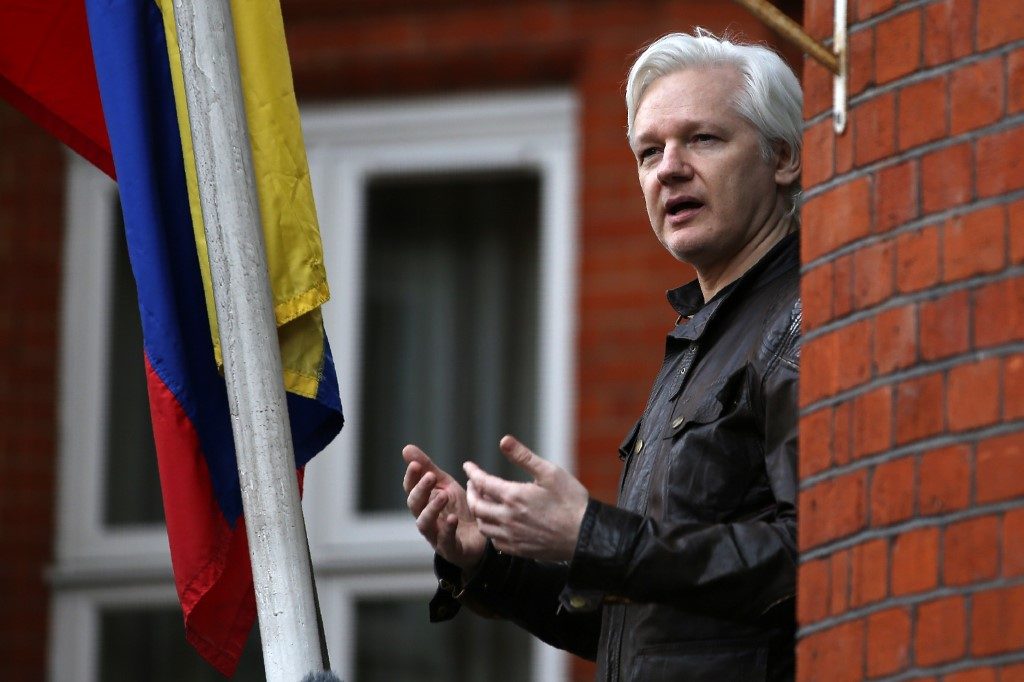SUMMARY
This is AI generated summarization, which may have errors. For context, always refer to the full article.

PARIS, France – WikiLeaks’ Australian founder Julian Assange was arrested on Thursday, April 11, after being holed up in Ecuador’s embassy in London since 2012.
Here are key developments in the affair:
2010: leaks, arrest warrant
July to October 2010: WikiLeaks releases about 470,000 classified military documents concerning American diplomacy and the wars in Afghanistan and Iraq. It later releases a further tranche of more than 250,000 classified US diplomatic cables.
November 2010: a Swedish prosecutor issues a European arrest warrant for Assange over sexual assault allegations involving two Swedish women. Assange denies the claims, saying the women consented.
December 2010: He turns himself in to police in London and is placed in custody pending a ruling on the Swedish extradition request. He is later released on bail and calls the Swedish allegations a smear campaign.
2011: Extradition ruling
February 2011: A British judge rules that Assange can be extradited to Sweden. Assange fears Sweden will hand him over to US authorities who could prosecute him for publishing the documents.
2012: Refuge at embassy
June 2012: He takes refuge in the Ecuadoran embassy in London. He requests, and is later granted, political asylum.
October 2013: Ecuador asks Britain in vain to allow Assange to fly to Quito.
2016: UN appeal
January 2016: Quito rejects an offer by Swedish prosecutors to question Assange in London.
February 2016: The UN Working Group on Arbitrary Detention says Assange has been “arbitrarily detained” and should be able to claim compensation from Britain and Sweden. Britain and Sweden rebuff the non-binding ruling.
2017: Sex case closed
January 2017: WikiLeaks says Assange could travel to the United States to face investigation if his rights are “guaranteed.” It comes after one of the site’s main sources of leaked documents, military intelligence analyst Chelsea Manning, is given clemency.
May 2017: Swedish prosecutors say they have closed their seven-year sex assault investigation into Assange. British police say they would still arrest him if he leaves the embassy as he breached the terms of his bail in 2012.
December 2017: Quito grants Assange Ecuadoran nationality. Britain refuses Ecuador’s request to accord Assange diplomatic status, which would allow him to leave the embassy without being arrested.
2018: Ecuador seeks a solution
January 2018: Ecuador says it is seeking a mediator to resolve Assange’s “untenable” situation.
February 2018: He loses a bid to have his British arrest warrant cancelled on health grounds.
March 2018: Ecuador cuts off Assange’s communications alleging he broke an agreement on interfering in other countries’ affairs.
October 2018: It imposes new conditions on Assange in the embassy, warning that breaching them could lead to the “end of asylum.”
November 2018: US prosecutors inadvertently disclose the existence of a sealed indictment against Assange.
2019: Ecuador complaint
April 2019: Ecuador’s President Lenin Moreno says Assange has “repeatedly violated” the conditions of his asylum at the embassy.
An independent rights expert was due to visit Assange at the embassy on April 25 to assess whether the violation allegations merit investigation.
April 11: British police say they have arrested Assange at the embassy after his asylum was withdrawn. – Rappler.com
Add a comment
How does this make you feel?
There are no comments yet. Add your comment to start the conversation.